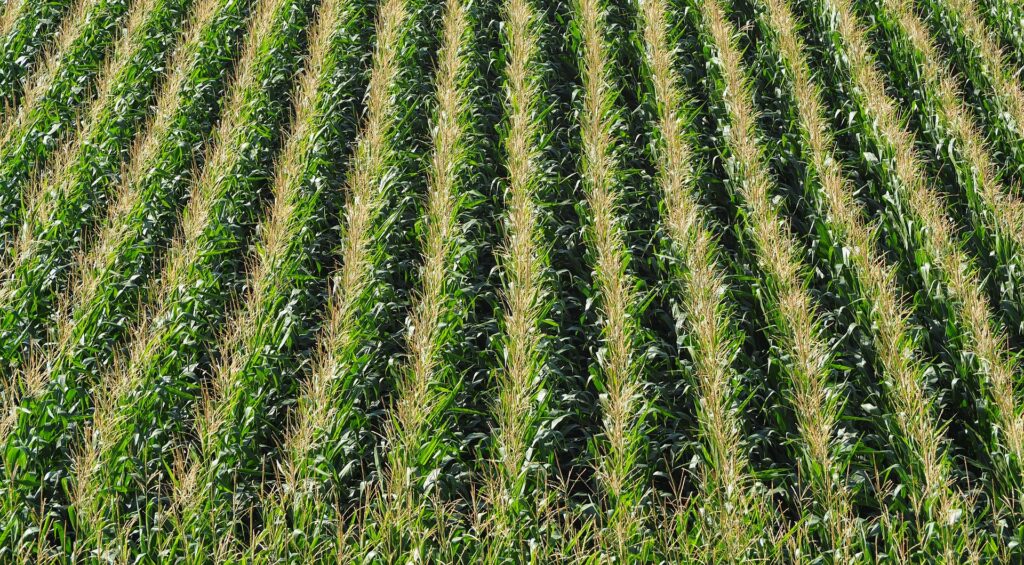Q: What is biological farming and how does it compare to organic farming?
A: Most organic farming practices implement biological farming principles, but not all biological farming practices are organic. Biological farming, much like organic farming, treats the soil as a living ecosystem that works best when care is taken to limit our negative effects on soil life.
Gary Zimmer, one of the co-founders of Midwestern BioAg, has refined the biological farming approach since the 1980s and has published two books on biological farming. In them, he details that there are six principles of biological farming:
1. Test and balance your soils and feed the crop a balanced, supplemented diet.
2. Use fertilizers that do the least damage to soil life and plant roots.
3. Apply pesticides and herbicides responsibly while relying on customized management practices to reach maximum genetic potential.
4. Create maximum plant diversity by using green manure crops (cover crops) and tight rotations.
5. Manage the decay of organic materials and the balance of soil, air, and water.
6. Feed the soil using carbon from compost, green manures, livestock manures, and crop residues.
Within the last decade or so, soil health has become a hot topic in the agriculture industry. There have been several new products that have been marketed as improving soil health. We know from our own experience that biological farming is the path to improving soil health, and that results may not immediately be visible.
Q: How can we measure biological improvements in soil?
A: Traditional soil tests are used to measure the chemical and physical properties of soils. Several biological tests have been developed to measure a soil’s biology. These biological tests focus on measuring either the biological activity or the diversity of microorganisms present. However, both can be important tools for biological farmers, as they can demonstrate in the short term the impact biologically minded practices are having on soil life.
Most biological tests focus on measuring the biological activity of soil. This is most often done by measuring the amount of carbon dioxide the soil and microorganisms are respiring. Higher respiration rates are a sign of higher biological activity, which is positively related to nutrient mineralization and residue decomposition.
The Haney Soil Health Test is one of the most popular tests for measuring soil health, and soil respiration is an important component of this test. Some advanced soil analyses measure the diversity of soil microorganisms. Microbial diversity is an excellent indicator of soil health.
A soil that has more diverse microbial populations is more resilient to environmental stresses.
These types of tests are currently more expensive and are mostly used in academic settings, but as the technology matures and they are more widely adopted in the Ag industry, we can better understand the impact our practices are having on soil biology.
Q: What is the role of soil carbon in biological farming?
A: Biological farming practices build soil carbon over time. Soil carbon is extremely important for plant and soil health, as the carbon cycle controls residue and nutrient mineralization. If measuring soil respiration from soil organisms helps measure short-term changes in soil health, measuring the actual carbon present in the soil helps understand the long-term changes in soil health. Soil organic matter is the partially decomposed plant and animal residue that is about 50% organic carbon. Biological farming works to conserve or even build soil organic matter over time.
In recent years, there has been growing interest at the public policy level surrounding sequestering soil carbon, which is a way of taking carbon out of the atmosphere and storing it in the soil as organic matter. In some cases, farmers are being paid based on the amount of carbon they have been storing in their soil. Ultimately, these programs are targeted to conserve and improve our existing soil. The agronomic practices that are encouraged and sometimes even required for farmers enrolled in these programs use much of the same principles as biological farming, such as minimal tillage and the use of cover crops (green manure).
Q: How can you incorporate more biological principles on your farm?
A: Biological farming is a process and not an endpoint. Parts of this process may be implemented immediately, and others may require more planning, but all will have a positive impact on your farm. “Advancing Biological Farming” (2011) and “The Biological Farmer” (2016) by Gary Zimmer and Leilani Zimmer-Durand were mentioned above and are robust resources if you would like to dive deeper into the biological farming approach. Similarly, reach out to the expert consultants at Midwestern BioAg about incorporating more biological farming principles on your farm.

